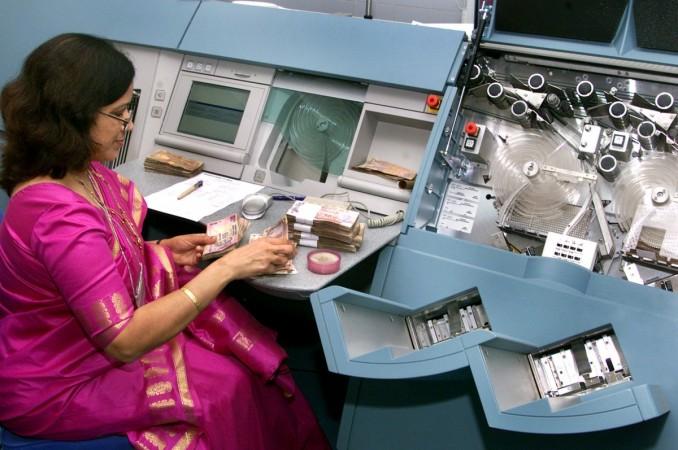
The Reserve Bank of India (RBI) is using sophisticated currency verification and processing system (CVPS) for counting the total number of scrapped notes of Rs 500 and Rs 1000, the central bank said in a reply to an Right to Information (RTI) query.
The regulator clarified that it is not using "counting machines" rather, it is using "sophisticated currency verification and processing (CVPS) machines for checking the numerical accuracy and genuineness of the currency notes, including SBNs (specified bank notes that have been scrapped)," Mint quoted RBI.
The central bank said in a statement that, these machines are way superior to the note counting machines. To increase the processing capacity, RBI is using the available machines in two shifts. It is also exploring other options to augment processing capacity even further.
On August 30, RBI in the annual report 2016-17, had said Rs 15.28 lakh crore, or 99% of the demonetised notes have returned to the banking system.
Earlier on November 8 last year, Prime Minister Narendra Modi announced that Rs 500 and Rs 1000 notes won't be considered as legal tender, which constituted more than 86% of circulation, totalling Rs 15.44 trillion.
However, RBI denied sharing the information on the number of personnel deployed for counting of the demonetised notes. "Compiling the information would disproportionately divert the resources, the information sought cannot be furnished as per section 7 (9) of RTI Act, 2005," the RBI said in its reply.
A RTI filed by a PTI correspondent, requesting the dates from which the counting of the demonetised notes began. The RBI replied: "Compiling the information would disproportionately divert the resources, the information sought cannot be furnished as per section 7 (9) of RTI Act, 2005."
Speaking on demonetisation data, Finance Minister Arun Jaitley defended the move, saying the impact of the note cancellation move had been "extremely positive" in multiple areas. Accusing the Opposition of creating confusion that demonetisation was solely to curb black money, Jaitley clarified that the objective of the massive exercise hadn't been confiscation.
Soon after RBI released the demonetisation data, former finance minister P Chidambaram lashed out at the government, saying that only one percent of demonetised notes not coming back to the central bank. It is a "shame on RBI" which recommended demonetisation, he said. He also posed a question before the Modi government in a tweet: "99% notes legally exchanged! Was demonetisation a scheme designed to convert black money into white?"














